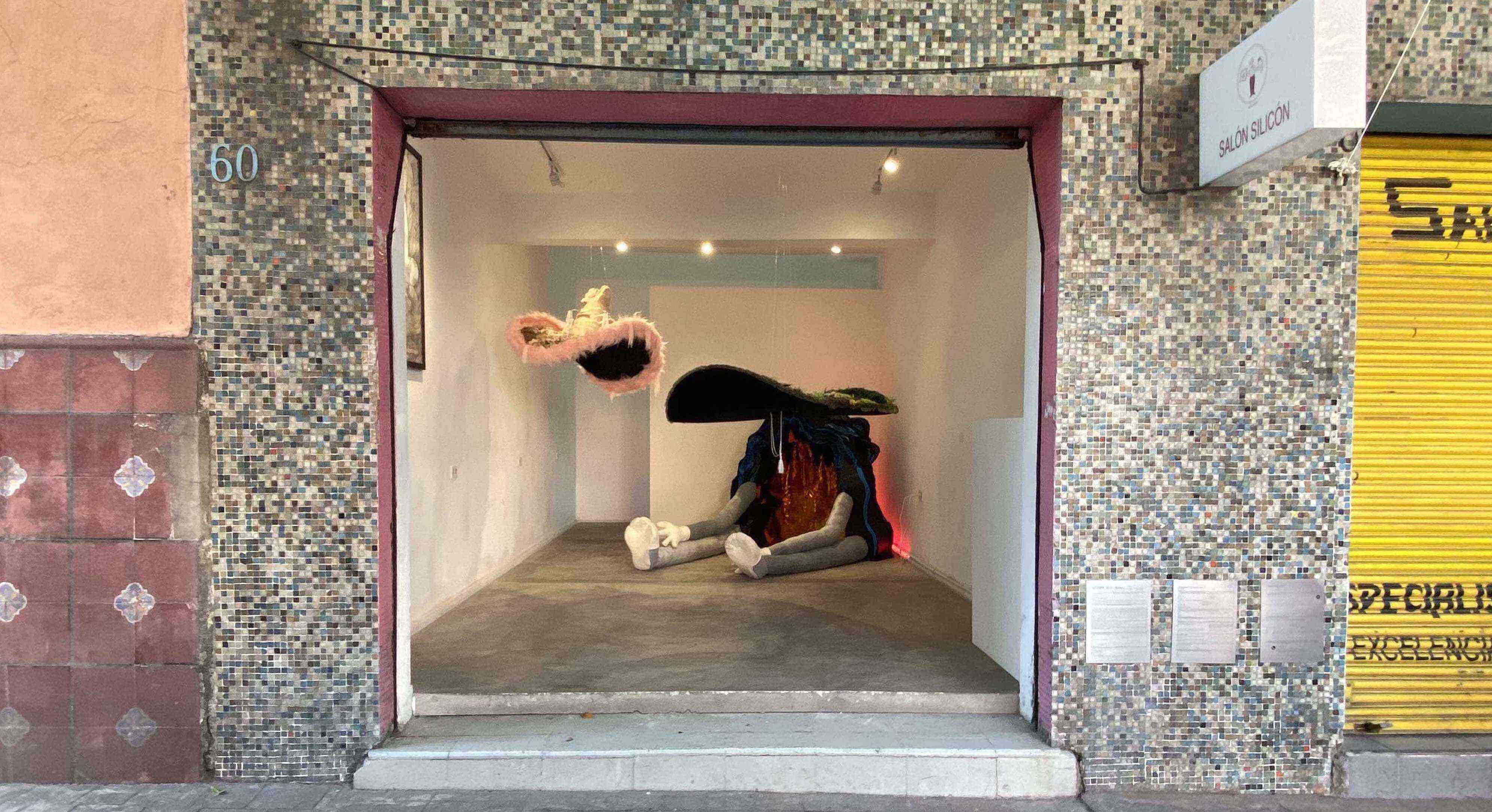
Review
Territ(or)ies of the Fiction of Class | On Paloma Contreras Lomas' show
by Stefanía Acevedo
At Salón Silicón
Reading time
8 min
Paloma Contreras Lomas (Mexico, 1991) presents Dr. Psiquiatra o el Más Allá Mexicano (“Dr. Psiquiatra or the Mexican Beyond”), at Salón Silicón. The artist explores her own position regarding class and gender issues in relation to Mexican art and society, continuing with a research project that she began in 2017.
The Novel
The exhibition refers us to Los miedos ancestrales pueden volver (“The Ancestral Fears May Return”) (2018), a novel that Contreras produced as part of her FONCA (“National Fund for Culture and the Arts”) fellowship. This turn towards literature, as a process of thought and production, allowed her to be concerned with problems that arose from a reassessment of her research: what began under the auspices of a romanticism meant to document alterity turned toward an interrogation of her own class.
In the novel, the author recounts a fictional chronicle of her visits to a community in the Sierra of Puebla, which she carried out between 2013 and 2017. The novel combines science fiction and horror via characters embodying figures of the Mexican imaginary such as Juan del Monte, El Activista, Ranulfo “the hunter,” El Brujo (“The Shaman”), María (“an iconoclastic girl trapped in the body of a compact adult who seems to compete with any newborn calf”), and a Beyond the Mexican who is configured as the story progresses.

In the movement toward interrogations of class, Contreras decided to fictionalize her own contradictions and problems. During her research, such questions arose as: What do I do in this community?, What fantasies are at stake in making these visits?, Who appears there and how? After talking with her, I came to understand some of the perspectives running throughout the novel and, subsequently, the show. Combined in both are fiction, terror, and class. The artist wondered from what position she could refer to alterity and realized that she could only do so from fantasy, from the position of a tourist entering a foreign country.
At that juncture, literature allowed her to create characters out of her own lack of certainties and, thus, to self-fictionalize. The artist says:
“I don’t have to speak from a marginality that does not correspond to me. I live certain specific oppressions, I can’t take myself on in an alterity.”
Fiction and class intersect in the pieces, having as a starting point particular situations that she lived and witnessed. The artist makes no descriptive reference to them, any more than she identifies with what she is facing; rather, from the use of imagination as a mode of metaphorization, she speaks of conditions running through a certain kind of middle class in Mexico.
Salón Silicón
The exhibition consists of five pieces distributed in Salón Silicón. Olga Rodríguez, Laos Salazar, and Romeo Gómez, who are in charge of the gallery, collaborated with the artist to make assembly and exhibition decisions. Four pieces are shown in the front and one in the back. In the show, some of the novel’s characters and their situations materialize in costumes imagined by the artist. The works are made with such materials as stuffed animals, foam, different types of fabric, and plastic details. With these elements, Contreras created costumes representing her novel’s characters, which are not shown as people, but rather as landscapes-witnesses (“paisajes-testigos”), a name given by the artist herself. The pieces were made from symbols of the Mexican imaginary: as much from territories as from modes of being, dwelling, and moving.
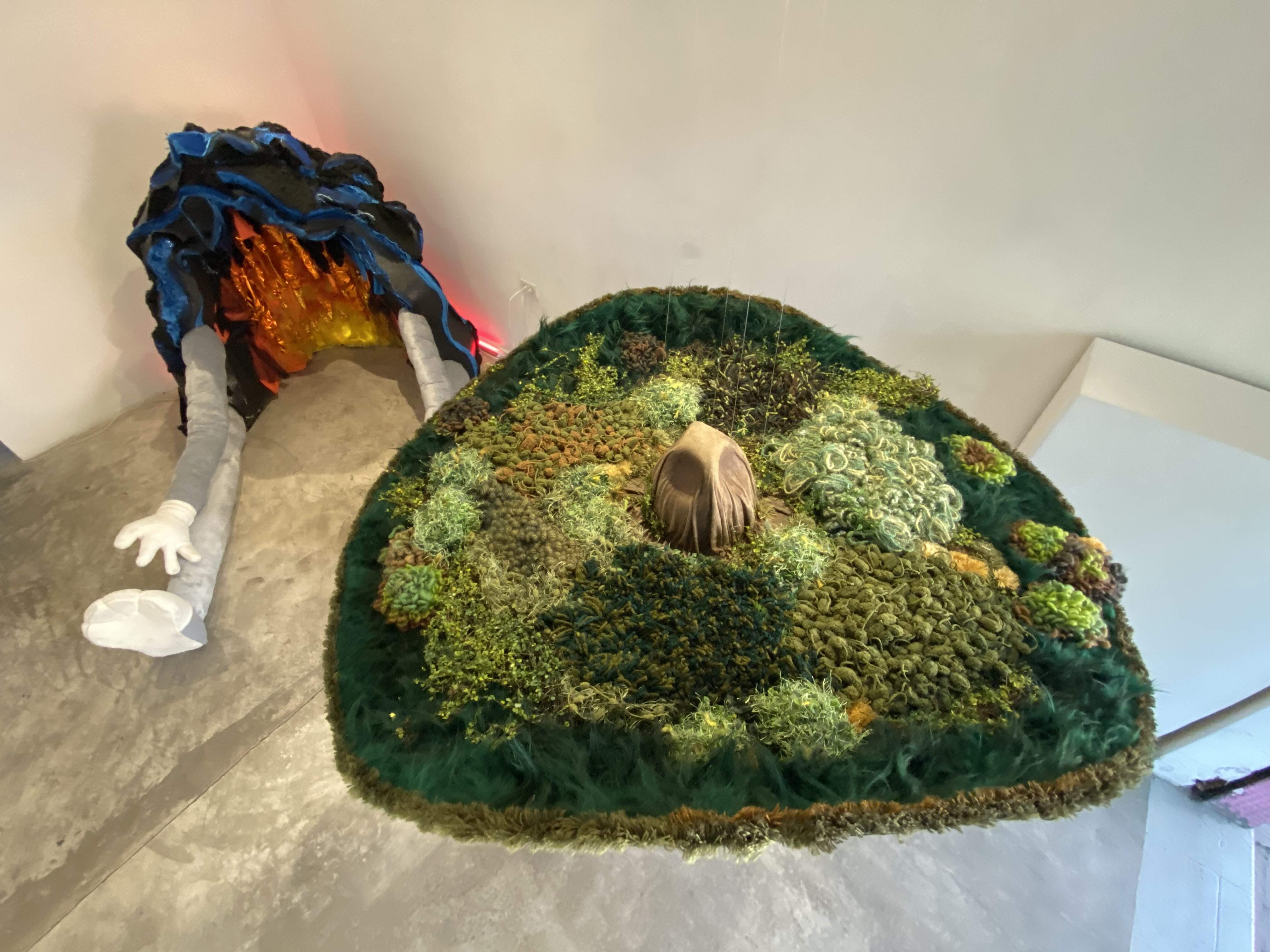
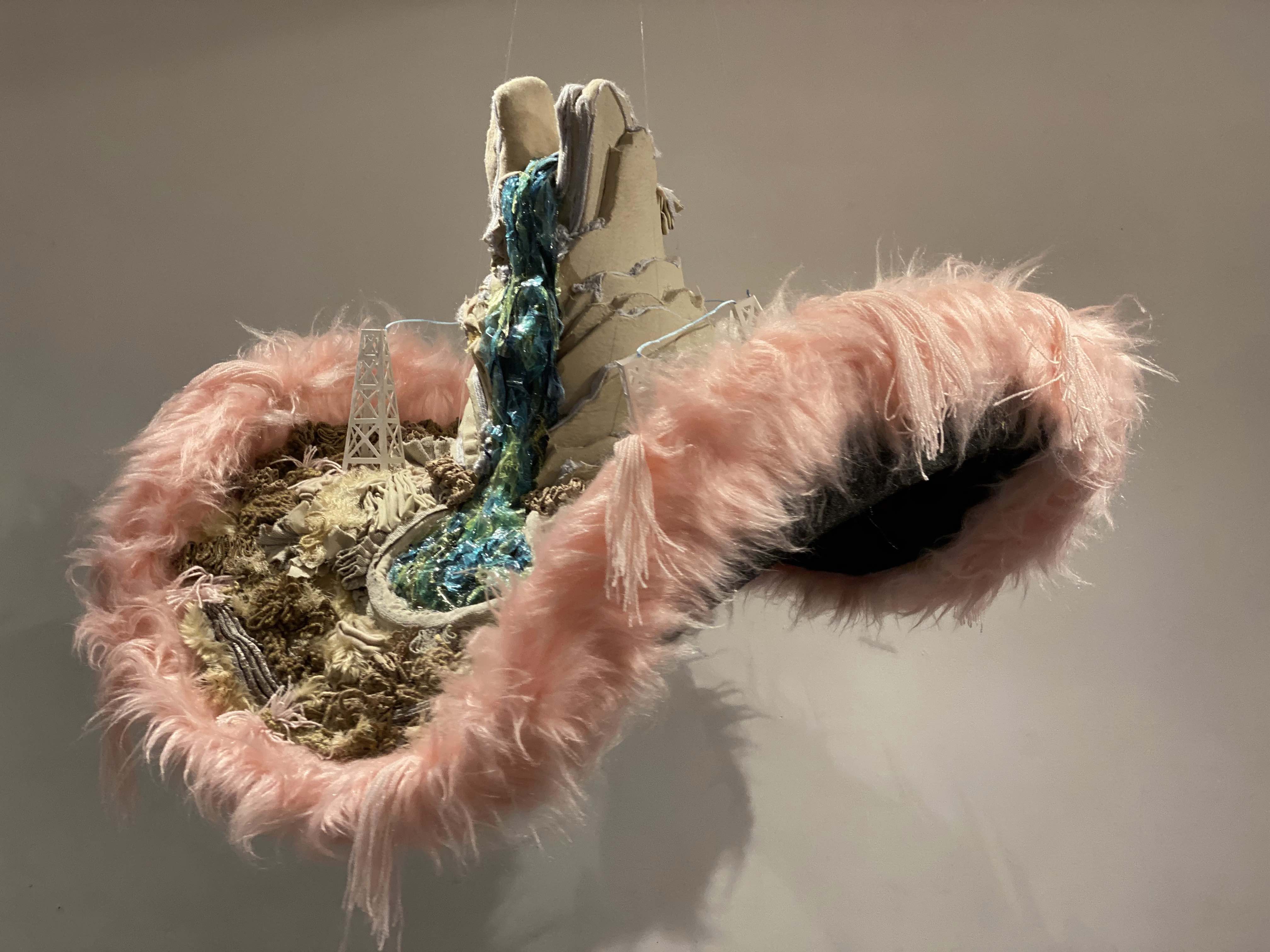
Sombrero de Hidroeléctrica (“Hydroelectric Hat”) and El monte (“The Mountain”) are two of these landscapes-witnesses, both in the form of hats offering contrasts in terms of each’s color palette and predominant materials. While the former refers to the conflict involving the dispossession of territory and the destruction of the natural landscape, the latter evokes a green and lush landscape, winking at the novel’s character of Juan del Monte. In the artist’s words:
“If Canadian hydroelectric and mining companies come in, they destroy the landscape and everything that inhabits it; what disappears is not only the material, like the fauna and flora, but also part of the imaginary, like Juan del Monte.”
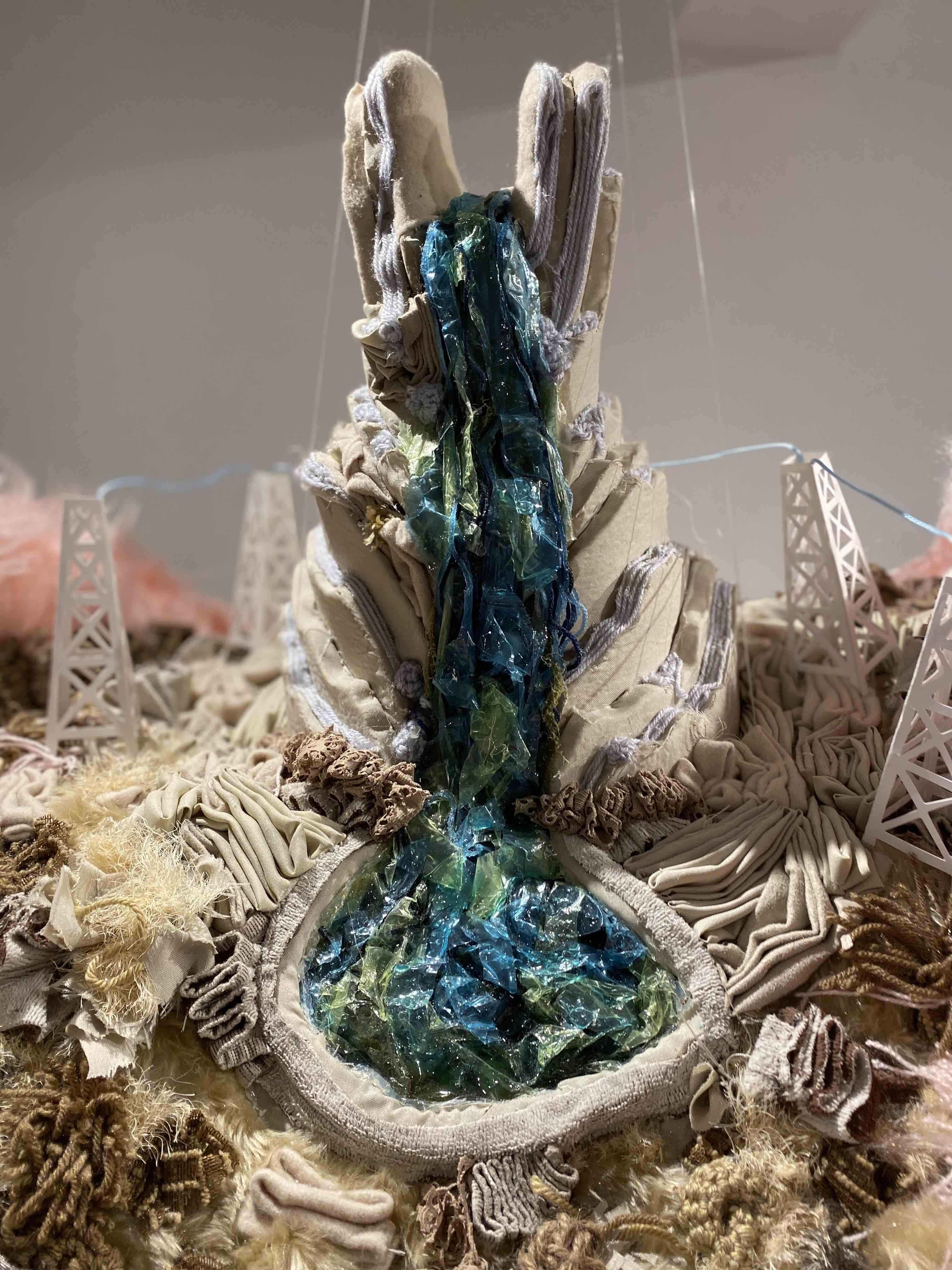
In the back of the gallery we find the wardrobe of “The Beyond the Mexican” (“El Más Allá del Mexicano”). This landscape-witness, who gives the exhibition its name, is a male and phallic portal who uses an elongated hat and who carries colorful plush guns. This “beyond” is presented in fiction as a warning of death: “It’s a portal that’s capable of disappearing women so that you never see them again…The Mexican beyond is the dimension of infinity. It’s something you pass through, and who knows if you come back,” says the artist.
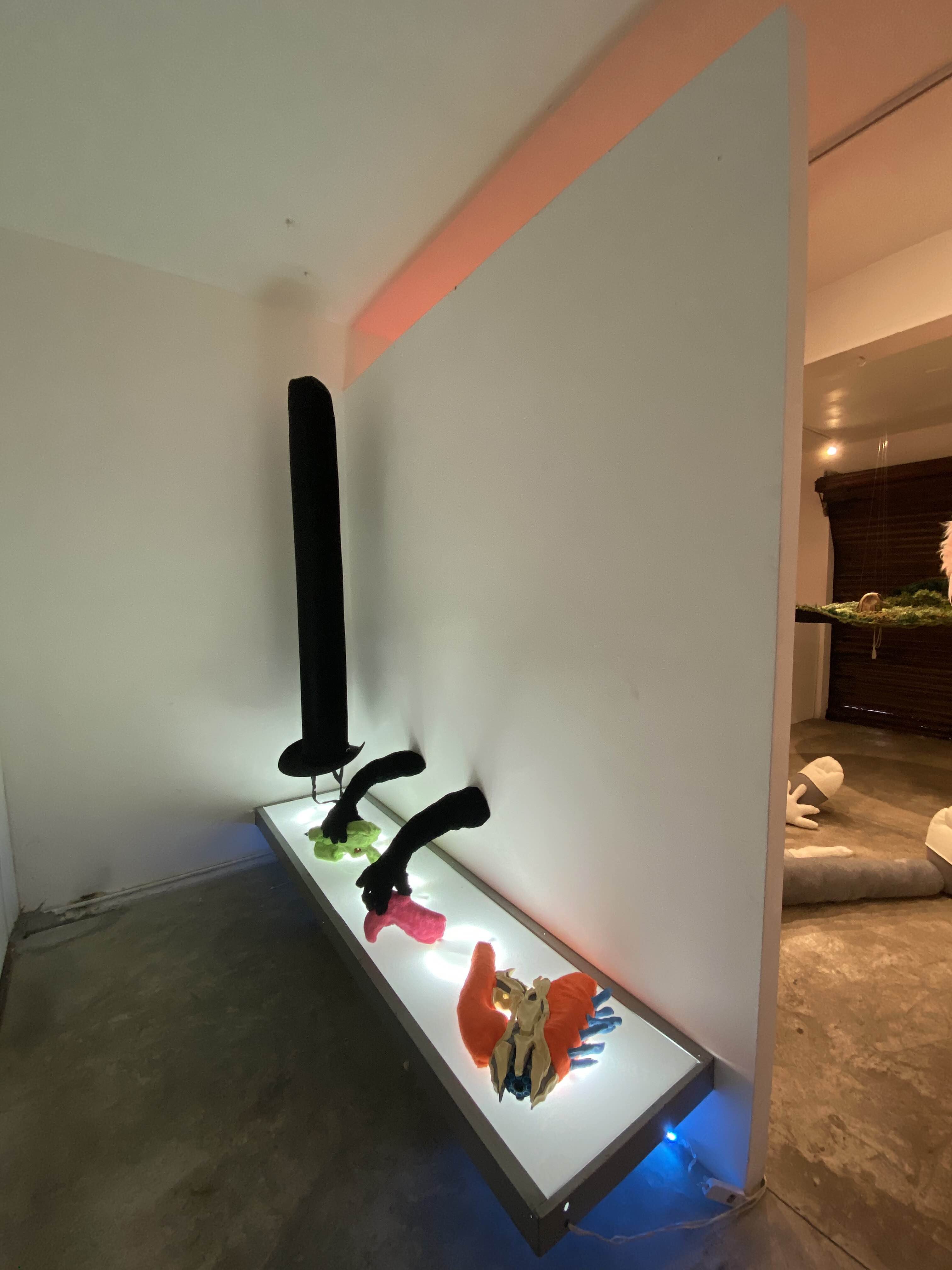
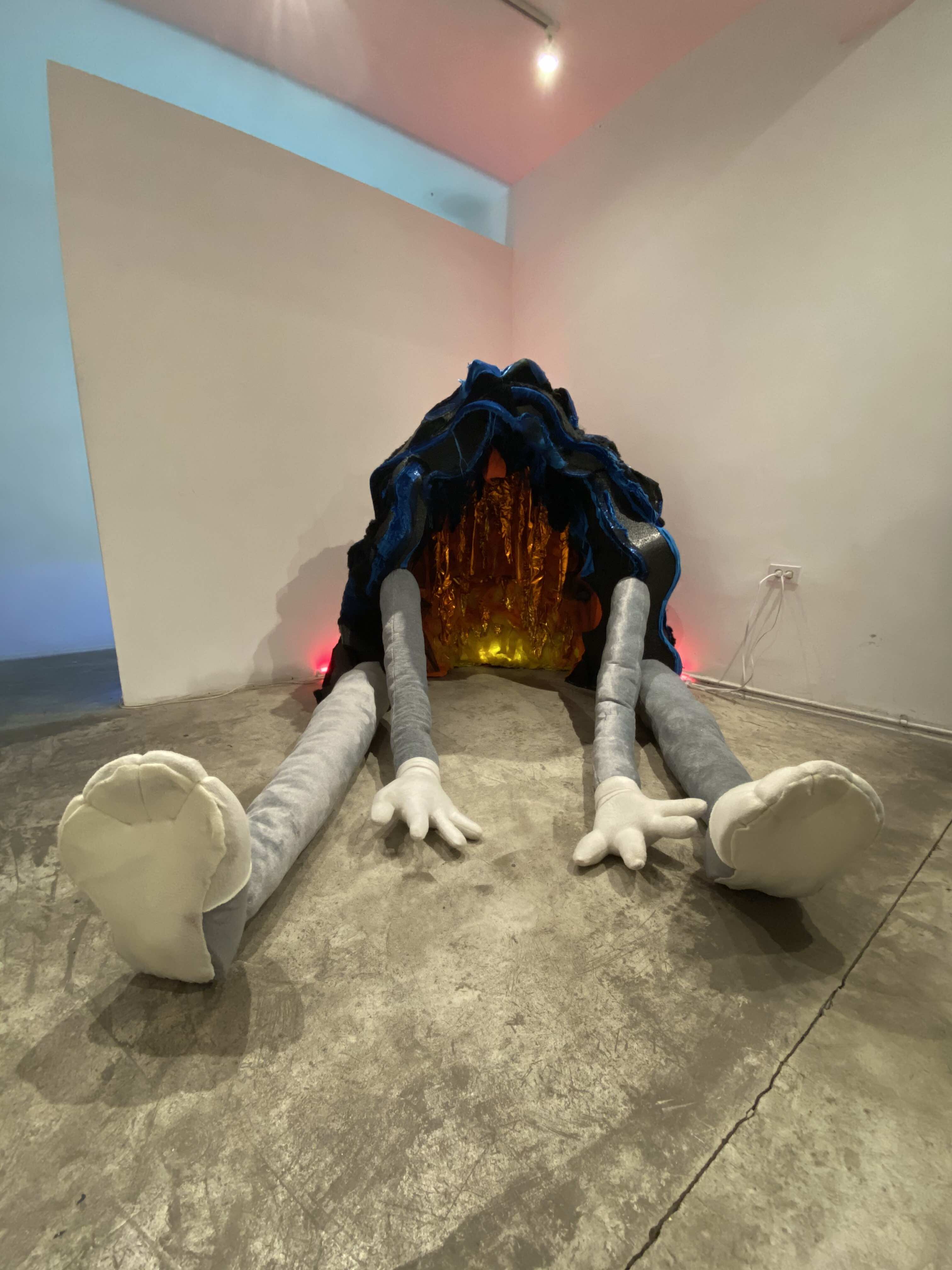
At the end of the gallery, long legs and stuffed arms remind us of Bugs Bunny; it is La cueva (“The Cave”), a piece of 120x120 cm. The visitor can enter between its folds of red and orange satin, emulating a portal to another dimension. We also find the same figure of the rabbit, whose face we do not see, in the exhibition’s only drawing: Bugs Bunny detrás de un arbusto mesófilo (“Bugs Bunny behind a Mesophyll Bush”) presents a bush covering a large part of the character’s body. In the center of the drawing, we see the elongated hat intermingling with the grass.
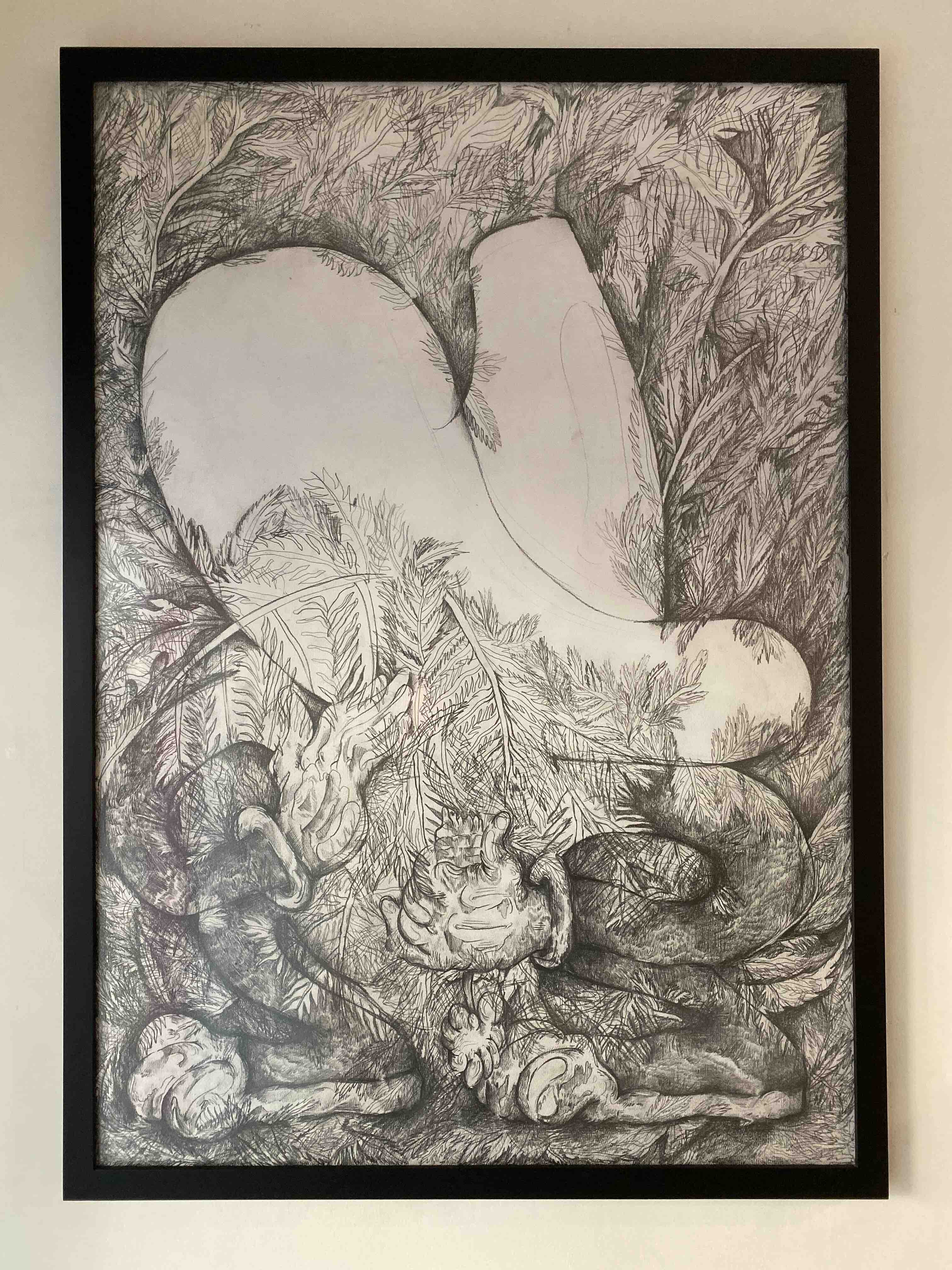
In Dr. Psiquiatra o el más allá mexicano, Contreras is processing the horror produced in her from inhabiting a territory to which she did not belong, of which she was a witness. At the same time, the landscape itself was a witness of the visit, as much of her as of the other characters, some of whom are there to destroy it. The artist carries out an interrogation of her own role in this scenario based in her choices of such different elements as fabrics, soft material, and vivid colors. The cartoonization plays a very important role, since, layer upon layer, it camouflages her concern with her own condition and territory: the middle class. In this way, she manages to turn to the place where she indeed recognizes herself: “I did not want to emulate any kind of material condition from the community I visited, but rather from my own visual references, which are based a lot on fashion and the use of different fabrics.” The fantasy of creating other territories allowed her to locate the difficulty of taking on a process of de-class-ization; coming from a conservative middle class, the production process made her realize that the most conservative thing was to hide her provenance.
The aestheticization of horror-turned-plush is the terror of the middle class for inhabiting its own condition; it is a way of demonstrating those ghosts that persecute it in its aspirational narrative, and that place it in the “between” of two social strata. Contreras manages to process her fantasies and her anguish through something that seems funny, since otherwise she would become too uncomfortable. On the other hand, the alternative of de-class-izing, as the artist mentions about her own experience, is also a failed attempt. Any failed attempt evokes the terror of facing the possibility of losing, so softness is necessary in order to counteract the Terror of inhabiting the Terror itself, the class itself. In the artist’s words:
“Terror exists and underlies the naivety of the middle class in approaching those territories because there is something that they will never understand.”
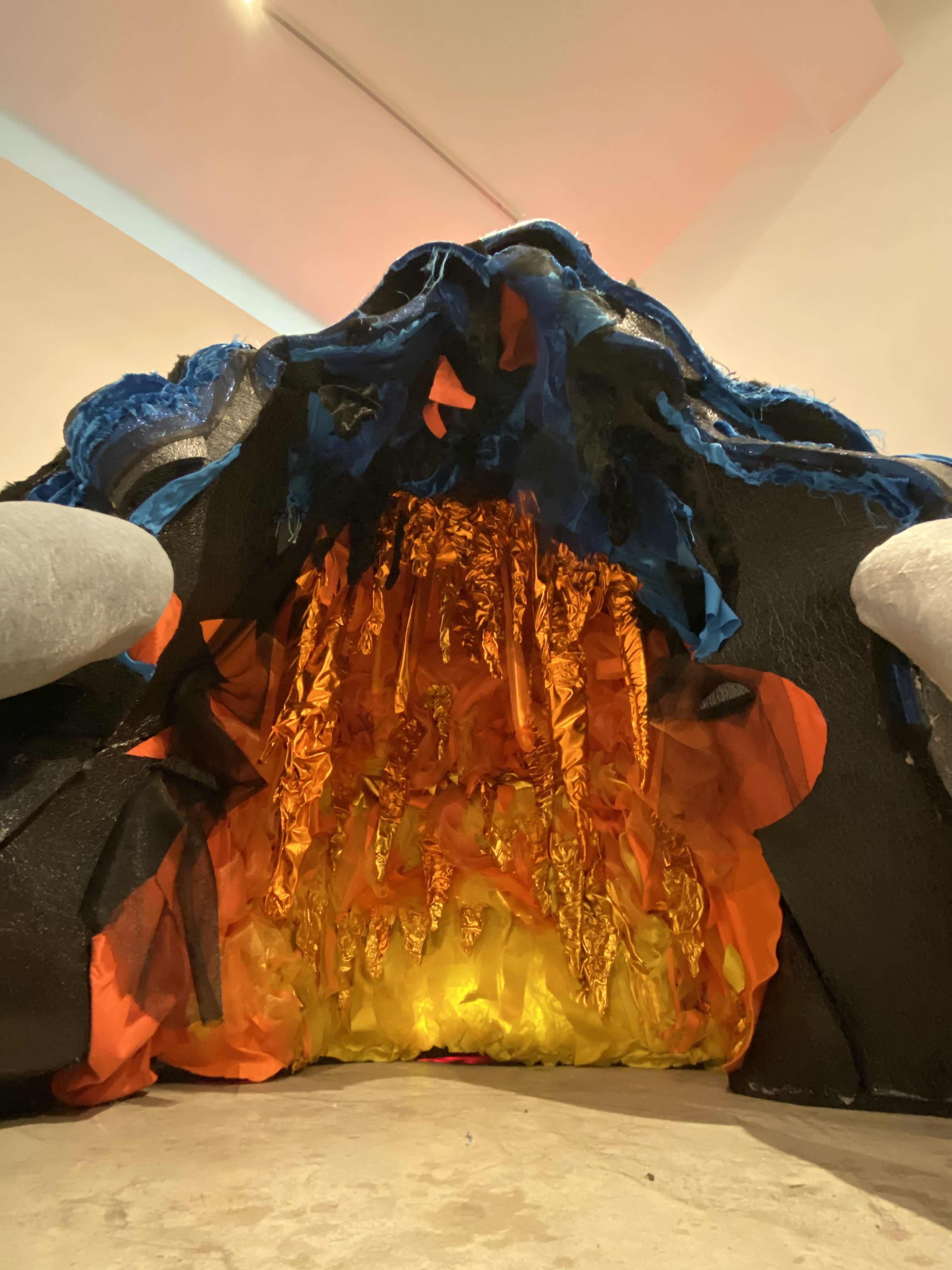
For the artist, speaking from her own condition implied putting herself in a more vulnerable situation than speaking from the other’s fantasy. This meant recognizing her own terror and shame about her class condition, creating a kind of imaginary script that allowed her to take charge of her own fiction. By translating her novel into another type of register (clothing that anyone could wear) and taking off from the landscapes-witnesses (which allow the characters to appear in different bodies), the artist opens a way to a “between,” to a “beyond,” to the place of terror, which is not external, but rather presents itself within the same problem.
Perhaps what we look for in the other is to avoid the question put to ourselves. We do not realize that it is necessary to resort to other phantoms and specters that allow us to recognize ourselves, in order to face our own fantasies. If it weren’t for the possibility of fictionalization, we would be driven mad.
Dr. Psiquiatra o el más allá mexicano will on view at Salón Silicón until March 14.
Published on March 11 2020